05 Mar March 2021: Structural Engineers


Office: 843 846 2500
www.WillisSinclair.com
Info@WillisSinclair.com
March 2021
Number 85
Matthew (3 1/2 years old, our 33rd grandchild) is explaining the meaning of life to Samuel (2 months old, our 37th grandchild) his younger brother. These brothers are our son and daughter-in-law’s 10th and 12th children. They live near Springfield, Missouri.
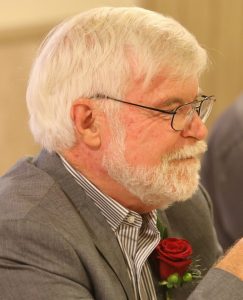 From the Desk of Bill …
From the Desk of Bill …
It has been about a year since the CCP Virus hit and masks have been required. With spring just around the corner, maybe it is time to get out a bit. If you want to avoid crowded areas (probably a good idea), there are many places you can visit. (It would be a good idea to call before you visit to make sure of the hours and if the location is open.)
If you are interested in historic living in the South, you might enjoy the Effingham Living History Museum in Springfield, Georgia. It is about an hour (50 miles) from Brays. The museum has a number of old buildings you can tour along with many old tools, wagons and other historic items. You can also visit the old jail which is upstairs in the Sheriff’s home which is also part of the tour. (912 754 2170)
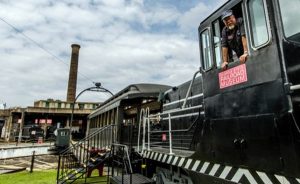
Just after the founding of our country, we built a number of brick forts for defense from naval attacks. There are three old brick forts nearby. The closest is Old Fort Jackson near Savannah (1:07 hours and 56 miles). It was built as a last defense for Savannah from attacks up the Savannah River during the war of 1812 and the War Between the States. You can visit the fort, watch demonstrations (sometimes they fire a cannon) and listen to talks. (Old Fort Jackson: 912 232 3945)
Going east from Old Fort Jackson towards the Atlantic about 10 miles you will come to the Fort Pulaski National Monument. During the South’s bid for freedom in 1862, the era of brick (masonry) forts ended. The Federals had moved a new weapon (rifled cannons) into position near Tybee Island. By rifling the cannons, the artillery could fire much more accurately than the smooth bore cannons. Brick forts could not withstand repeated cannon hits and the fort was nearly demolished. The fort has been restored and is interesting to visit. Fort Pulaski National Monument is 1:18 hours, 66 miles from Brays. (912 786 5787)
North of Brays about 1:21 hours (61 miles) is perhaps one of the most well known brick forts: Fort Sumter. There is a boat at Patriot’s Point which takes you to visit the fort. Fort Sumter’s responsibility was to guard Charleston harbor. During the War Between the States, the Northern forces sort of remodeled the fort: they changed the 3 story high fort into a 2 story high fort with their cannons. The fort is fun to visit. When we visited, I purchased a flag which was flown over Fort Sumter (along with a certificate stating when it was flown). Now the flag and certificate are on the wall in my weight room.
Patriot’s Point is also the site of more modern history. The World War II carrier USS Yorktown is there along with a submarine and a destroyer. I believe the sub is not open because of tight quarters and the CCP Virus. Patriots point also has a mock up of a Vietnam forward base and other displays.

The USS Yorktown is open for tours. There are also a number of World War II vintage aircraft on the carrier. The USS Laffey destroyer is in the foreground. You can also (usually) tour it. The Arthur Ravenel, Jr. bridge is in the background. (843 884 2727)
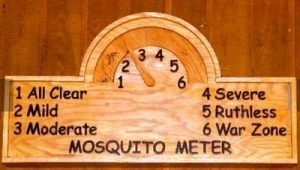
South Carolina has a national park: Congaree National Park east of Columbia. (2:33 hours and 111 miles from Brays). The park features the largest bottomland hardwood forest in the east. There are boardwalks through the forest. Be warned: mosquitos are very bad in the summer. They even have a mosquito meter to warn you.
The Mosquito Meter at Congaree National Park gives you an idea of what to expect on the boardwalk. The park is 2:33 hours and 111 miles from Brays. (803 776 4396)
If you are up for a longer trip or perhaps an overnight trip, there are some interesting Revolutionary War battlefields in the northern part of the state. About half of the battles of the Revolutionary War were fought here in South Carolina although you don’t hear about them too often.
Some of the first fighting was at a star shaped fort called Ninety Six. There is a log stockade there and the remains of the star shaped fort along with a viewing tower. Ninety Six National Historic Site is about 3 hours and 148 miles from Brays. The photo shows part of the star shaped fort with logs protruding to slow the enemy’s attempts to scale the dirt walls of the fort. The Americans even dug a long tunnel trying to get into the British fort, but were unsuccessful.

The Battle of King’s Mountain also took place in the northern part of the state. It is 3:40 hours and 222 miles from Brays. Kings Mountain National Military Park was the site of a significant American victory. 864 936 7921. There is a state park adjacent to the National Park, but it seems to be primarily a camping park and has little to do with the battle.
General Daniel Morgan and his band of patriots defeated British General Banastre Tarleton’s crack army in 1781 at what is now known as the Battle of Cowpens. You can walk on the battlefield when you visit Cowpens National Battlefield where General Morgan managed to pull off a double envelopment (attacking on several sides, this time on all sides) — one of the few double envelopments in history. Cowpens National Battlefield is 3:31 and 231 miles from Brays. (864 461 2828)
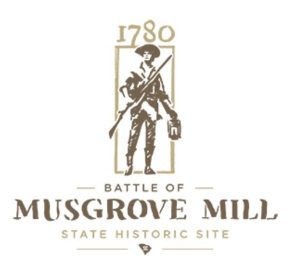
The Battle of Musgrove Mill is where a vastly outnumbered patriot militia surprisingly defeated the British. The Battle of Musgrove Mill State Historic Site is the newest park in the South Carolina park system. You can walk on the battlefield where the Americans won. Musgrove Mill is about 2:47 hours and 184 miles from Brays. (864 938 0100)
There are many other places to visit in the area which might interest you. Charleston has a number of plantations and several forts. We have personally been to the ones I have mentioned here (and a number of others).
If you are up for a longer trip, you should consider State Road 11 in the northern part of the state. Along its length are waterfalls, historic sites and a number of state parks. This is a beautiful road through the hills in the rural upstate.
Kandy and I hope you all have a very pleasant spring. If you run across any great stops in your travels, please let me know. I am always looking for places to visit.
Structural Engineers
Before discussing structural engineering, it might be important to discuss engineering. Engineering is the use of science to design machines, devices, software, components and other objects. Typically, scientists discover scientific principles and engineers put those principles to use.
Probably the first engineers were military engineers: designers of battering rams, trebuchets, catapults and other engines of war – hence the name engineer. When engineers were not designing engines of war, they were involved with civil projects: aqueducts, roads, buildings and other structures. These engineers were then called civil engineers since they were working civil projects rather than military ones.
One branch or discipline of civil engineering is structural engineering. As the name implies, structural engineers design structures. Probably one of the best known structures designed (and built in this case) by a structural engineer, George Eiffel, is the Eiffel Tower. (Previously, Eiffel was the structural engineer for the much shorter Statue of Liberty. The Eiffel Tower is about 1060 feet high; the Statue of Liberty, 302 feet).
|
George Eiffel, a structural engineer, designed and built the Eiffel tower in Paris about 130 years ago. It was a project for the World’s Fair which was held in 1889. Three hundred steelworkers spent two years, two months, and five days, from 1887 to 1889, constructing the Tower, using more than 18,000 individual metallic parts, 2.5 million rivets, and 40 tons of paint. Since the Eiffel Tower is steel and very tall, in cold weather the steel contracts and the tower shrinks about 6 inches. |
A structural engineer is responsible to make sure a structure is sound and will not fail. Generally, the aesthetics of a building fall in the domain of the architect and the integrity of the building is the responsibility of the engineer. In some areas such as where we are, there are extra circumstances the structural engineer must consider. We are in earthquake and hurricane prone areas. Either of those will cause extraordinary loads on a structure.
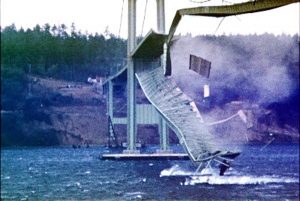 The wind that destroyed the Tacoma Narrows Bridge was not excessive. It was probably only about 30 or 40 miles per hour — not 100+ miles per hour like one might experience here in a hurricane. Not all structural engineering projects are successes. This bridge over Puget Sound (near Tacoma, Washington) lasted only a few months. It opened for traffic on July 1, 1940 and collapsed on November 7, 1940. The main span was the third longest in the world. The engineers had not understood or considered the wind load on the bridge. It is remarkable that wind can collapse a bridge, but it certainly can as the Tacoma Narrows Bridge failure proved. |
The engineer also has to determine the size of beams and trusses to make sure floors and roofs are rigid and stiff. Often truss designers design trusses using software since truss design is relatively routine. Some beam sizing can be determined from tables in the building codes so structural engineers don’t often get involved with them.
When unusual situations are involved, the engineer is needed to make sure all aspects of the design are considered. It takes much more than a look up table sometimes. The trick is to know when you can use a table and when you need to take a closer look. If structural engineering consisted of just using a table, it would not take four years of engineering school, five or so years of experience under an engineer and a couple of 8 hour exams to be licensed as a structural engineer today. The engineer must master a number of different subjects to thoroughly understand how to solve structural problems.
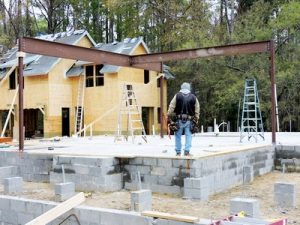
This home needed a unique steel I beam design to support the loads from the second floor and roof. A structural engineer sized the steel columns and beams to insure the home’s integrity during storms or earthquakes. |
When you have a home designed, you usually don’t have to get involved with the engineering aspect. If the architect thinks an engineer’s input is needed, as it often is with larger custom homes, he will arrange for the engineering analysis.
As always, we, at Willis Sinclair, stand ready to answer your questions and help you make decisions on your new home or remodeling project. Call or text us (843 846 2500), email us (info@willissinclair.com), write us (24 Gabriel Rd., Lodge, SC 29082 or visit us at one of our work trailers. We can help. No cost or obligation for you, of course.
Copyright © 2021 Willis Sinclair, Inc., All rights reserved.






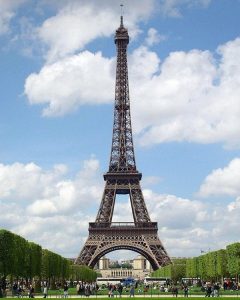
No Comments